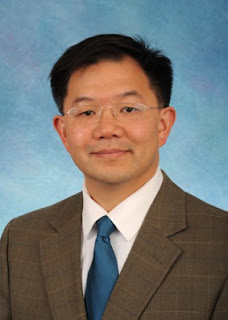JAHA: Tell us about the key findings from your recent article
in JAHA.
Dr. Rostila:
- Surviving women
were 25 percent and men 15 percent more likely to die from heart attack after
the death of a sibling, compared to people who had not lost a sibling.
- Increased risk of
death from heart attack was four to six and a half years after the death of a
sibling among women and two to six and a half years after among men.
- No notable
increased risk of heart attack occurred immediately after their siblings died.
- If their sibling
died of heart attack, the risk of heart attack death in the following years
rose 62 percent among women and 98 percent among men.
JAHA: What are the major implications of this work?
Dr. Rostila: Healthcare providers should follow bereaved siblings to help
recognize signs of acute or chronic psycho-social stress mechanisms that could
lead to heart attack. We might be able to prevent heart attacks and other
heart-related conditions by treating these siblings early on and recommending
stress management.
JAHA: How did you get the idea to do this study?
Dr. Rostila: During my career I have been interested in the links between
social networks and health, for instance, I wrote my thesis about social
capital and health. However, it is not only the presence of a social
relationship that could have severe health effects. Also the loss of a
relationship could influence health. A family may be considered the simpliest
form of a social network and the loss of a family member could therefore be
considered a traumatic and stressful event. While previous studies have
examined whether the loss of other family members might trigger myocardial
infarction, the impact of grief following the loss of an adult sibling has been
largely overlooked. To the extent that siblings are also beloved, provide
companionship and support, one would expect that death of an adult sibling --
as much as the death of other family members (e.g. spouse, parents, children) –
could be considered a stressful life event
JAHA: What was your biggest obstacle in completing this study?
Dr. Rostila: Despite the obvious strengths of the use of total population
register data such data does not include detailed individual information that
is required to uncover the actual causal mechanisms that link sibling deaths
and myocardial infarction. Ideally, one would like to have access to biological
and genetic data, detailed information on diseases from medical records, more
information on shared childhood social environment and family characteristics
and detailed data on personal and relational characteristics which is
unfortunately not included in the registers
JAHA: What was your most unexpected finding?
Dr. Rostila: That our results suggest that this association between the
loss of a sibling and having a heart attack is more likely to occur some years
after bereavement. Most previous studies suggest that bereavement could trigger
myocardial infarction through acute psycho-physiological stress mechanisms
("the so called broken heart syndrome"). Deaths from broken-heart
usually appear within the first few hours and days after a stressful event
while our findings suggests effects in the longer-term.
JAHA: What do you plan to do next, based on these current
findings?
Dr. Rostila: The loss of a parent at adult ages - as a trigger of
myocardial infarction - is also rarely studied. In the future we therefore aim
to study whether parental loss could increase the risk of myocardial infarction
in the shorter and longer-term. We are however also interested in how sibling
loss influence other diseases and causes of death such as suicide, stroke, and
cancer.
JAHA: What do you like to do in your free time?
Dr. Rostila: I enjoy exercise like running and going to the gym. I also
enjoy travelling and experiencing new countries and cultures. I have two small
children so of course I want to spend as much time as possible with them during
my free time.
JAHA: What is your favorite sports team or musical group?
Dr. Rostila: In particular i follow the Swedish national team in Ice
hockey and soccer since I am Swedish. My local favorite team in soccer and Ice
hockey is Djurgården from Stockholm ,
Sweden
Profile originally published April 16, 2013



